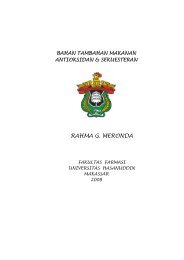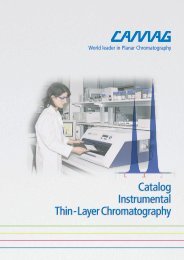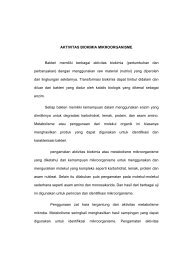Stability of Drugs and Dosage Forms Sumie Yoshioka
Stability of Drugs and Dosage Forms Sumie Yoshioka
Stability of Drugs and Dosage Forms Sumie Yoshioka
You also want an ePaper? Increase the reach of your titles
YUMPU automatically turns print PDFs into web optimized ePapers that Google loves.
72 Chapter 2 • Chemical <strong>Stability</strong> <strong>of</strong> Drug Substances<br />
For example, the following relationships were employed by Rogers 322<br />
Stelmach,323 respectively:<br />
<strong>and</strong> Eriksen <strong>and</strong><br />
(2.85)<br />
(2.86)<br />
In these equations, T 0 <strong>and</strong> T are the temperatures at time zero <strong>and</strong> time t, respectively, <strong>and</strong><br />
b <strong>and</strong> a are constants. Assuming that the temperature changes according to Eq. (2.86), a rate<br />
equation obtained by combining the first-order rate equation, Eq. (2.12), with Eq. (2.84) can<br />
be integrated to give Eq. (2.87). The estimates <strong>of</strong> E a <strong>and</strong> k T0 (rate constant at T 0 ) can be<br />
obtained by fitting the drug concentration versus time data to the following equation:<br />
(2.87)<br />
Estimations using Eq. (2.87) <strong>and</strong> variants <strong>of</strong> this equation were performed manually with limited<br />
temperature programs <strong>and</strong> were not generally applicable to drug degradation studies. 324,325<br />
New analysis methods using flexible temperature programs have been reported with the<br />
increasing availability <strong>of</strong> computers to facilitate subsequent calculations. Zoglio <strong>and</strong> coworkers<br />
326-328 proposed a method for obtaining optimal kinetic parameters. They described<br />
the degradation versus time curve as a function <strong>of</strong> E a by using the arithmetic mean <strong>of</strong> an<br />
individual rate constant at time t as the mean rate constant <strong>and</strong> by representing temperature<br />
change in terms <strong>of</strong> a linear or polynomial expression. 326-328 Kay <strong>and</strong> Simon performed this<br />
estimation using an analog computer. 329 Edel <strong>and</strong> Baltzer applied a stepped heating program<br />
to this method. 330<br />
In contrast to these approximate methods, the nonlinear regression methods reported<br />
by Madsen et al. 331 <strong>and</strong> Tucker <strong>and</strong> Owen 332 utilized numerical integration <strong>of</strong> Eq. (2.88),<br />
which is obtained from the general rate equation (Eq. 2.11) <strong>and</strong> Eq. (2.84). Equation (2.88)<br />
becomes Eq. (2.89) for first-order degradation kinetics.<br />
(2.88)<br />
(2.89)<br />
Hempenstall et al. 333 reported a calculation method that can be performed by simple<br />
computers, whereby the degradation curve is represented by a polynomial equation in order<br />
to easily obtain a rate constant k T at a temperature T. Using Eq. (2.90), k T can be represented<br />
by Eq. (2.91) in the case <strong>of</strong> first-order degradation kinetics. Inserting the coefficients a 0 , a 1 ,<br />
. . . , a n , [which are obtained by fitting the drug concentration versus time data to Eq. (2.90)]
















